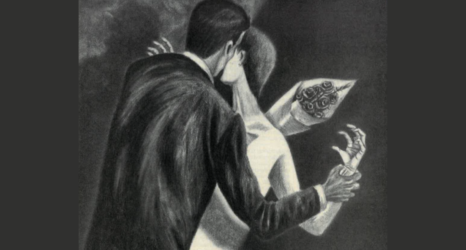It’s a gray, rainy afternoon at the School of the Art Institute. A woman excitedly taps me on the shoulder, “Is it OK if I touch them?” She gestures to my books on display. “Please!” I say. “That’s what they’re there for.”
For anyone else this interaction might seem odd, but I’ve gotten used to it. My books rarely resemble the kind of books people are used to encountering. Every element is produced by hand, from the binding, to at times the paper itself. They are letterpress-printed using antique machinery, and include laser-cut 3-D sculptural elements.
The confusion of how to engage with the books is as understandable as it is frustrating to me, as their maker. Without being held, the books can’t speak. And what these books have to say is immensely important.
These particular books are entitled JARRING III—a set of three books in an edition of 50 that share the true narratives of 22 survivors of sexual assault.
The project began while I was still a graduate student myself, enrolled in the MFA in book art and creative writing program at Mills. It was during this program that I was sexually assaulted—an experience that left me feeling shocked, ashamed, confused and helpless, unable to do much more than sleep and feed myself.
In the long year that followed, my search for justice would lead absolutely nowhere. The irritated policewoman assigned to my case told me, “There are 180 cases on my desk just like yours,” before closing it. The perpetrator suffered nothing more than a phone call from the police.
I did what most people would do in this situation: I broke down. And somewhere in the process of breaking down, I found myself reaching out to the only people who I felt would understand the strange onslaught of PTSD symptoms I was experiencing: advocates and other survivors. It was through programs including BAWAR, Pandora’s Project and After Silence that I realized how greatly important the narratives of survivors are, how they differ from one another and from the myths that are perpetuated in popular culture about sexual assault, and how, regardless of these differences, they connect us. And that connection makes us strong.
Few people ever hear narratives of sexual assault beyond the rare disclosures of friends and family. Considering that 1 in 5 women will be a victim of sexual assault in her lifetime, the reality that first-hand dialogue about sexual assault remains suppressed in our culture is not only absurd: it is harmful to our ability to progress.
Three years, two labs and six studios later, I’ve created 150 handmade books that use a combination of art, text and sculpture to share the narratives of survivors. The books will be placed in universities and museums throughout the country and sold, with the potential to raise nearly $50,000 for sexual assault survivor resources.
Last month, in honor of sexual assault awareness month, I toured with JARRING III, sharing my experience, and connecting with other survivors and artists.
Back at the School of the Art Institute, having finished my talk, a student approached and nervously introduced herself. She is also a survivor. Crumpled in her arms is an enormous tapestry. She lays it out on the floor, revealing an official document pertaining to her case woven entirely in gray, white and black textiles. As I read the document, I’m struck by the overwhelming proportions of the piece both in size and in subject—by its unapologetic honesty, by the translation of the feelings of the survivor into the experience of the viewer and, more than anything, I’m left with a deep desire for others to see this work. It is works like these, where the artist has at an enormous cost put so much of herself so beautifully into the piece, that truly deserve to be seen.
What began as a facet of my own healing process has now transformed into Art Against Assault—a network of artists and organizations that support and connect survivors across the country and beyond. As Zora Neale Hurston once said, “There is no agony like bearing an untold story inside of you.” As I continue to journey from city to city, meeting inspiring educators, counselors, students, artists, community organizers, volunteers and state workers who are fighting hard to address a situation that no one should have to suffer, and yet so very many do, what keeps me going is the hope that no survivor will ever have to bear that untold story inside of them ever again.
Get the Ms. Blog in your inbox! Click here to sign up for our newsletter.
Photos courtesy of Michelle Yoder





